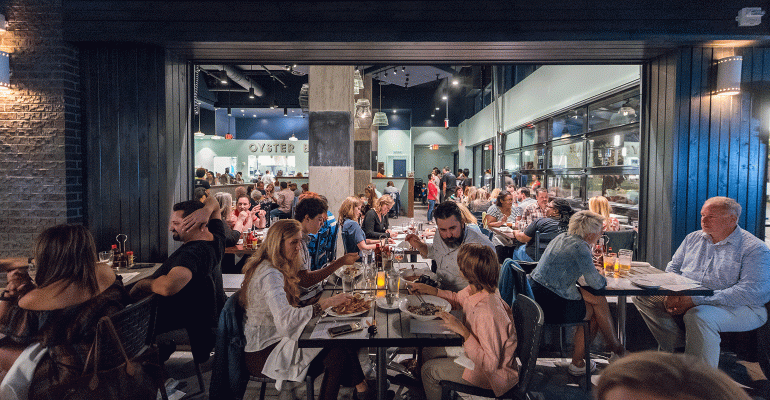Amid a tightening labor market and growing competition for talented chefs, Jamie Leeds has added three restaurants to her roster.
“I’ve doubled the size of the company in the past two-and-a-half years,” said Leeds, who now operates four Hank’s Oyster Bar locations, a Hank’s Pasta Bar and a Hank’s Cocktail Bar, all in the Washington, D.C., area.
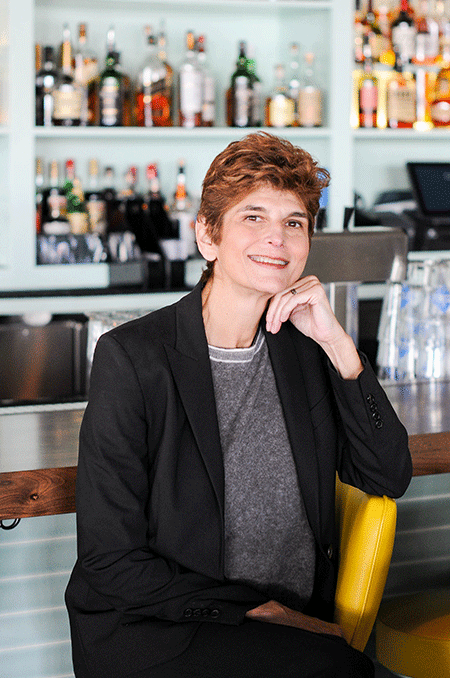 The key: “I really take good care of my people, and we’re kind of known in the community as a good place to work,” said Leeds.
The key: “I really take good care of my people, and we’re kind of known in the community as a good place to work,” said Leeds.
She’s a self-taught cook who was lucky enough to get a job in her early years as a New York City prep cook at Danny Meyer’s Union Square Cafe. She worked her way up to the position of sous chef under executive chef Michael Romano, and then Meyer took her under his wing and sent her to France, where she worked at three two-Michelin-star restaurants.
She then returned to the United States and ended up in Chicago, working for Richard Melman’s Lettuce Entertain You Enterprises, first as the chef of a Spanish concept called Café Ba-Ba-Reeba, and then as corporate chef for several of his restaurants.
She returned to New York City in the mid-1990s with the then-outlandish idea of opening a restaurant in Brooklyn, of all places. Being about 10 years too early for that, banks were uninterested in talking to her.
“I couldn’t get any money,” she said. So instead she worked for Drew Nieporent’s Myriad Restaurant Group, eventually traveling to D.C. to open a restaurant called 15 Ria, which has since closed.
“I fell in love with D.C., and I decided to stay,” she said.

“I’d always wanted to open my own place and I saw opportunity here, because there were no neighborhood restaurants here at that time. There were only big boxes downtown, and a lot of steakhouses,” she said.
“So I cashed in my 401(k), got a loan, got some money from friends and I opened Hank’s on dime.”
That was in 2005.
It was pretty nerve-wracking, particularly since she and her life partner had a 2-year-old at home who needed looking after.
“I was totally freaked,” she said. “Are you kidding? I was like, ‘I’m putting everything on the line.’”
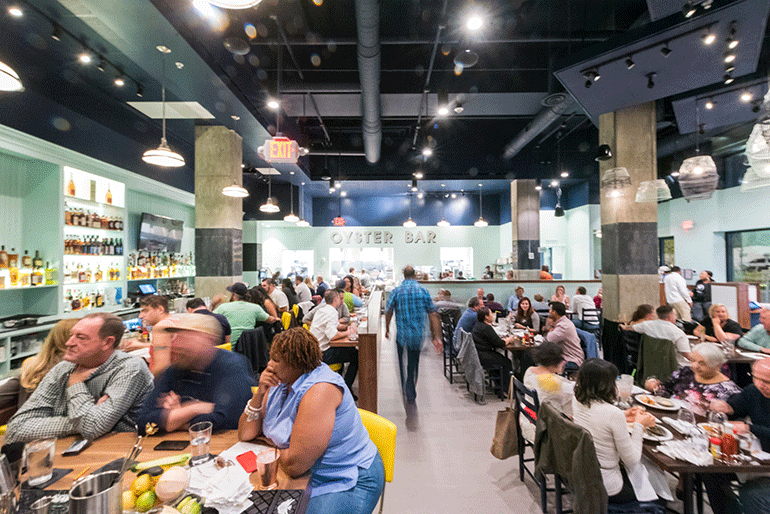
But as it happened, the largely gay neighborhood where the first Hank’s Oyster Bar opened in Dupont Circle welcomed her with open arms and lines out the door.
“I got a lot of support from the local community, and there were no neighborhood restaurants in D.C., like I said. It was a local, low-key casual seafood joint where you could get fresh, good-quality food at a good price.”
Sure, no problem. Just get a bunch of highly perishable, expensive food and sell it to people cheaply. How hard can that be?
There’s a reason why there isn’t a seafood restaurant on every corner, even 13 years after the first Hank’s opened (it’s named after her dad, by the way).
Leeds said she keeps prices down by working closely with her vendors.
“We have a couple of fish mongers who work directly with us, and we’re talking with them every day about what’s up, what’s local, what’s available, and we keep it at a certain price point,” she said.

That means, on recent menus, dishes like monkfish with herbed chanterelles, lobster butter and buttered fingerling potatoes for $24, and cod fish and chips for $19.
“I also allow for a little bit of a higher food cost [around 33 percent to 35 percent instead of a more standard 28 percent] because I don’t want to charge $40 for a piece of fish,” she said.
Keeping a sharp eye on operating expenses helps, too, she added. So does keeping a tight payroll.
Leeds gives everyone on her staff paid vacations — and it goes up to two weeks after two years — but asks them to take them during slow periods so no one has to work overtime. She also provides other not-so-common perks, such as paternity leave, babysitting subsidies on a case-by-case basis and, for corporate members, $1,500 for adult education and other self-improvement activity.
“I care about everybody, and I think that goes a long way,” she said. “I also give people a lot of freedom to run the business and be creative. I don’t micro-manage. People really appreciate that, too.”
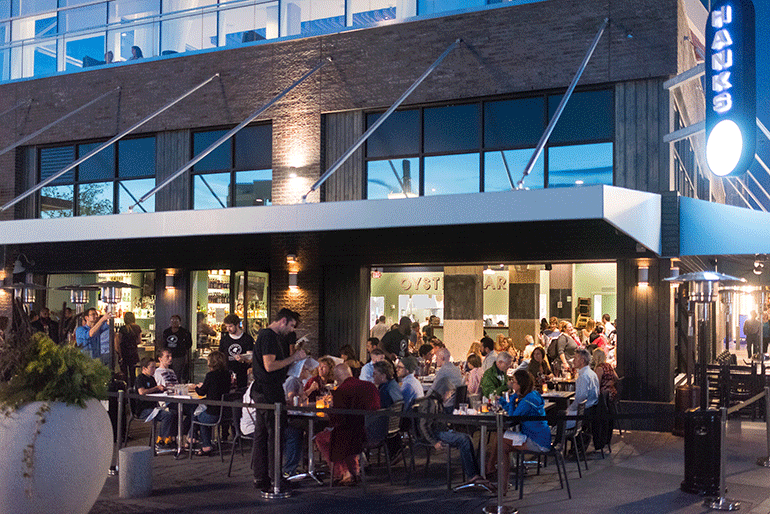
Training costs are also probably reduced because of low turnover. Not only her chefs, but a lot of prep staff, line cooks and dishwashers have been with her for more than 10 years, she said.
Also good for the bottom line: Drinks.
“We do really well on beverage costs,” Leeds said. And she sells a lot: Beer, wine and liquor account for between 30 percent and 40 percent of each restaurant’s sales.
That includes cocktails made from ingredients that would normally be discarded, like trim from citrus garnishes that are made into a “trash lime cordial” and the liquid leftover from roasting red peppers that has been used for a distinctive Negroni.
But the bread and butter, so to speak, of Hank’s restaurants are straightforward seafood dishes.
“Our fried oysters are incredible, and we have an award-winning crab cake,” Leeds said.
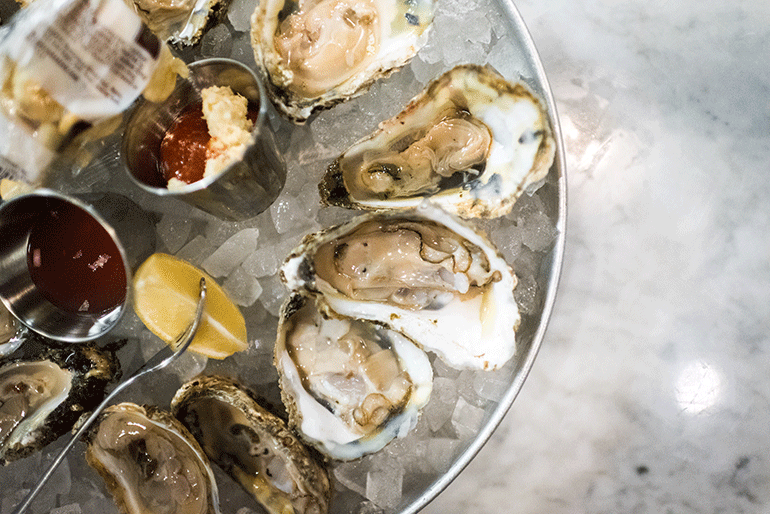
Also there’s a signature lobster roll, which is $25 with Old Bay fries.
“Basically, there’s one person that all they do all day is cook and clean lobsters and make lobster salad,” Leeds said. That salad is just large chunks of lobster mixed with mayonnaise, chopped celery, salt and pepper, served in a top-loading potato bun that has been buttered on each side with clarified butter and griddled.
Oh, and oysters. Each Hank’s locations serves three East Coast and three West Coast oysters, sometimes changing them daily, but at least four times a week based on what’s good.
Servers taste them each night and are provided with descriptors — briny, creamy — and size descriptions.
“Through the years and through our growth I’ve become closer to my oyster farmers,” Leeds said. Two of those farmers grow proprietary oysters for her to serve.
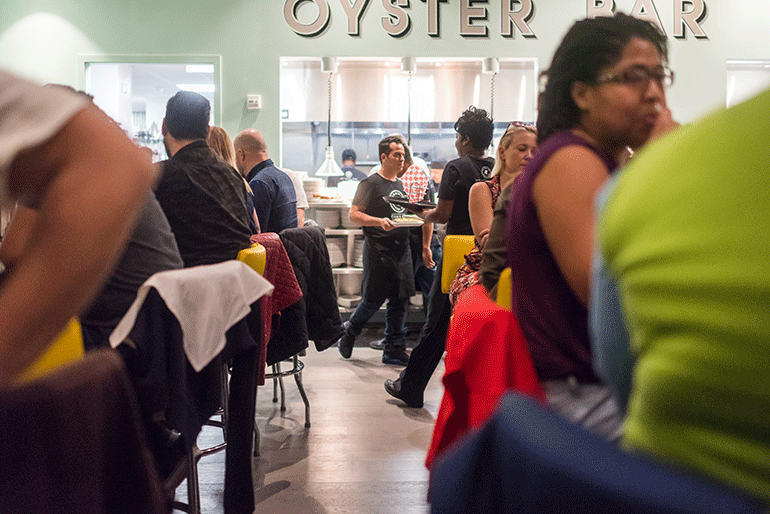
To keep her staff engaged, she brings them on field trips to some of those oyster farms, as well as local whiskey distilleries and other suppliers.
Thirteen years after opening her first restaurant, Leeds said every new opening is scary, but the first one was the scariest.
“I definitely put it all out there and just took the risk,” she said. “I jumped, and luckily it took.”
Contact Bret Thorn at [email protected]
Follow him on Twitter: @foodwriterdiary

